From the Field The Invisible Side of Science: Protecting Crops through Nanotechnology

The cutting-edge technology developed to track the COVID-19 virus is equally suited to identifying and reducing the spread of plant viruses, particularly Cassava Witches' Broom Disease in Southeast Asia. Discover how researchers in Colombia and Laos have applied DNA sequencing to identify and prevent this fungus.
Uncovering the Root Cause of Witches' Broom Disease in Cassava
In Southeast Asia, most smallholder farmers rely on cassava: its starch-rich roots form the basis of an industry that supports millions of producers. In the past decade, however, Cassava Witches' Broom disease has stunted plants, reducing harvests to levels that barely permit affected farmers to eke out a living.
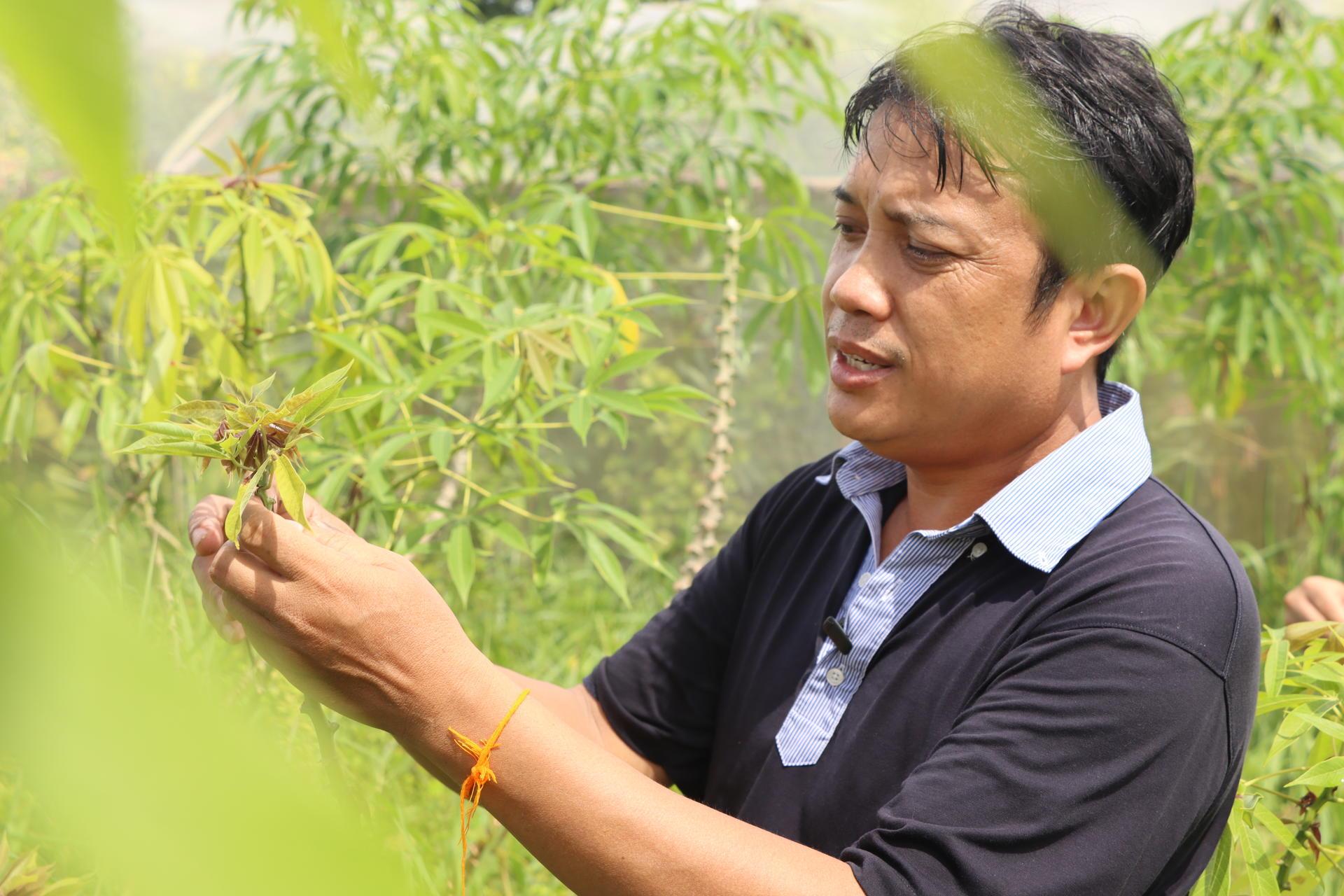
Comparing Cassava plants affected by witches broom in Laos. Photo: Alie Galeon
Although spindly stems punctuated by haphazard side shoots give infected plants a distinct "broom-like" appearance, these symptoms often manifest at late stages of development, making it difficult for farmers and extension agents to recognize warning signs early on. Knowledge of the disease's 'causal agent' can speed up diagnosis of diseased plants.
In a recent breakthrough, Alliance researchers compared DNA from healthy and diseased plant samples to reveal the underlying culprit behind the disease: the fungus genus Ceratobasidium. With these findings, published in Scientific Reports, plant pathologists in Laos, Cambodia, Vietnam and Thailand are better able to track and stop the spread of Witches' Broom disease.
Surrounded by cassava fields, Alliance researchers Wilmer Cuellar and Alejandra Gil-Ordonez demonstrate portable nanopore technology to regional plant pathologists at a new joint lab hosted by the National Agriculture and Forestry Research Institute, (NAFRI). Video: Eliot Gee
How was this discovery achieved? For the answer, we must travel to Cali, Colombia.
Four years before the pandemic, the virology lab at the Alliance of Bioversity International and CIAT had already begun implementing a new technology for disease diagnosis in cassava crops. However, in 2020, when the first COVID-19 variants began to appear, the Virology and Crop Protection Group, led by Wilmer Cuellar, moved from sequencing plant diseases to collaborating with the Colombian National Institute of Health to sequence the genetic variation of SARS-CoV-2, the virus that led to the COVID-19 pandemic.
At this time, Ana María Leiva and Leidy Viviana Domínguez, from the virology team, had a mission: to analyze and sequence up to 96 COVID-19 samples daily with the support of the Oxford Nanopore sequencing technology. These samples, sent by the Colombian National Institute of Health, were analyzed to identify variants of the virus.
The cutting edge of nanotechnology in the Alliance
This was possible with the latest in scientific innovation: nanotechnology, a field that encompasses a world imperceptible to the human eye, and empowers researchers to understand structures at a molecular level.
Since 2017, the Alliance has actively incorporated nanotechnology into its research, specifically through Oxford Nanopore DNA/RNA sequencing technology. This advanced tool provides insight into the most minute mysteries of plant life, accurately identifying pathogens such as viruses, bacteria and fungi that affect crops.

The cutting edge of nanotechnology in the Alliance
On the stage of scientific innovation, a protagonist emerges that joins and complements human endeavor: nanotechnology. This field encompasses the world of the imperceptible to the human eye, empowering us to manipulate and understand structures at the molecular scale.
Since 2017, the Alliance of Bioversity International and CIAT has actively incorporated nanotechnology into its research, specifically through the Oxford Nanopore DNA/RNA sequencing technology. This advanced tool provides insight into the deeper mysteries of plant life, accurately identifying pathogens such as viruses, bacteria and fungi that affect crops.
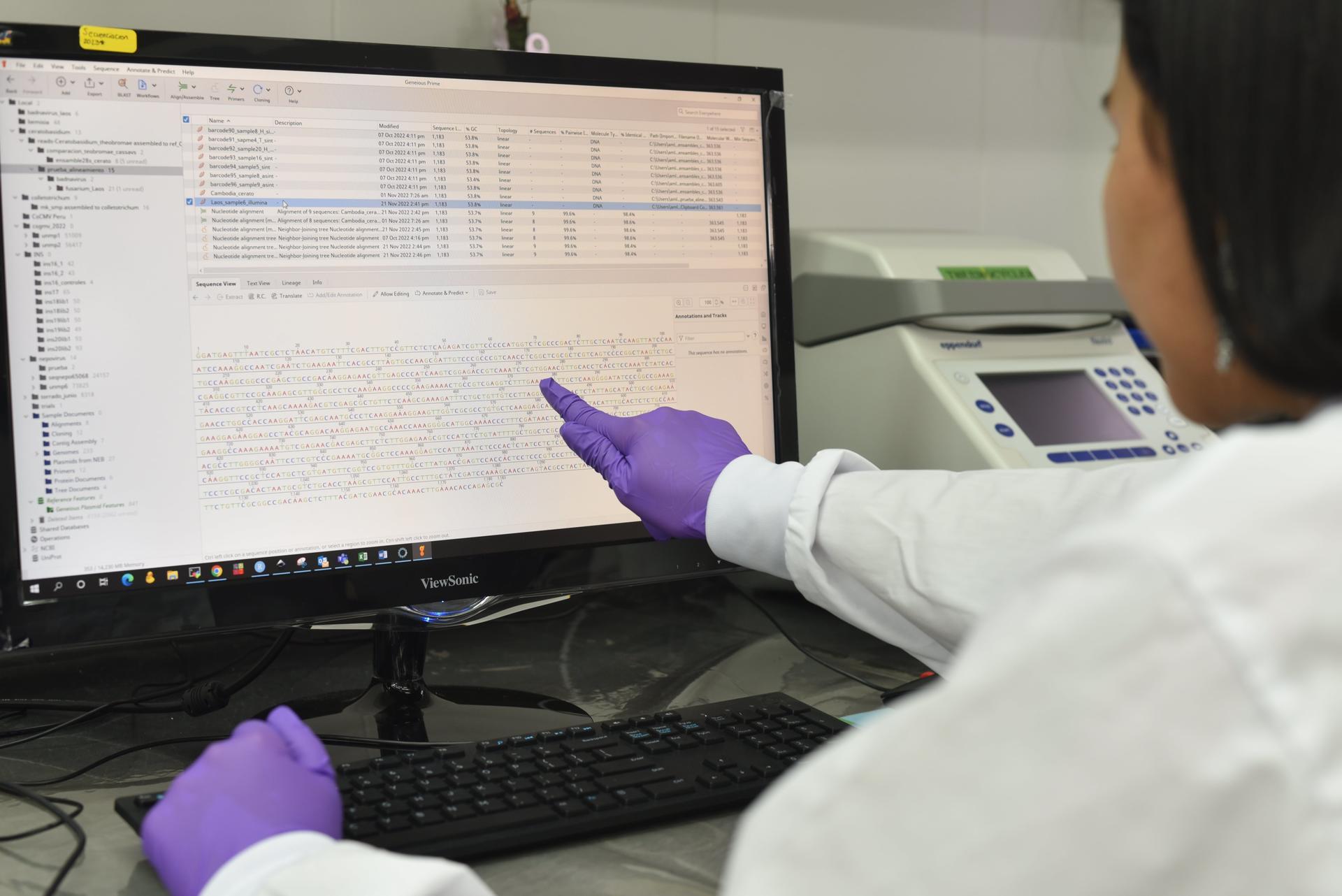
At the Alliance's plant virology lab in Palmira, Colombia, researchers use nanopore technology to analyze DNA sequences. Photo: Elizabeth Ramirez
In 2017, the Alliance acquired the first Oxford Nanopore sequencing technology in Colombia.
A magnifying glass for plant disease diagnostics
Plants, like humans, also get sick. Just as we visit the doctor for an accurate diagnosis when we feel ill, plants also require a detailed analysis to determine the cause of their illness. This meticulous diagnosis is the first step in developing effective solutions, a process that can take years of research.
"When you find out which pathogen is present in a crop, you can implement an appropriate diagnostic method, search for resistant varieties and integrate that diagnosis into variety selection processes", says Ana Maria Leiva, Senior Researcher at the Alliance.
At the Alliance's laboratories, the cassava virology team led by Wilmer Cuellar is composed of seven biologists, bioinformaticians and microbiologists - including Leidy Viviana, Ana María Leiva, Alejandra Gil and Diana Lopez - wearing gloves and gowns to work on the diagnosis and study of plant diseases. Using nanopore technology, among other plant diagnostic tools, they seek innovative and accurate solutions to current agricultural challenges. But, what makes this technology so special, and how has it revolutionized virological analysis?
Nanopore sequencing is an advanced technique that allows direct reading of nucleic acid strands by passing through tiny pores at the nanometer level. This not only improves accuracy by reducing errors, but also greatly speeds up the process. Compared to conventional techniques that can take days or weeks, this speed is vital for early and effective diagnosis of plant pathogens and viruses.
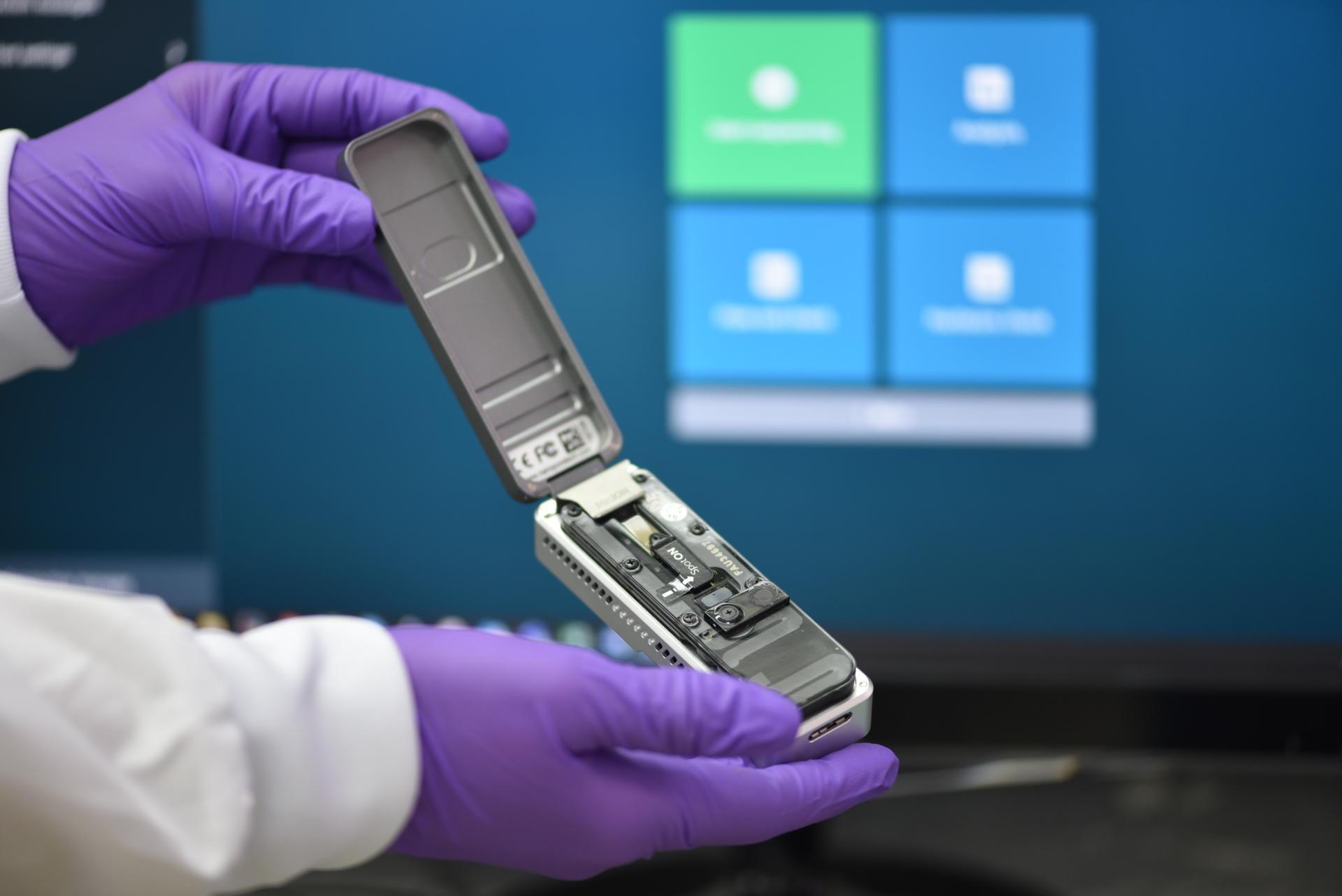
Portable nanowire technology is useful for field labs and remote locations. Photo: Elizabeth Ramirez
The portability of Oxford Nanopore technology makes it an adaptable tool for scenarios from state-of-the-art laboratories to agricultural fields, and it has even been used in space applications.
Strengthening nanotechnology in Latin America
In recent years, the Alliance has collaborating with institutions in Peru such as INIA and SENASA. These efforts are focused on providing training on pest and disease detection in crops, making use of Nanopore technology. Meanwhile, at the Alliance's campus in Palmira, the virology laboratory has put this diagnostic tool into practice in crops. An example of its application is the analysis of the banana crop in the face of the tropical Fusarium race 4 fungus.
Wilmer Cuellar emphasizes the importance of this technology not only for scientific advancement, but also for agricultural livelihoods: "We want to collaborate with groups focused on diseases of cacao crops, a vital source of income for many farmers."
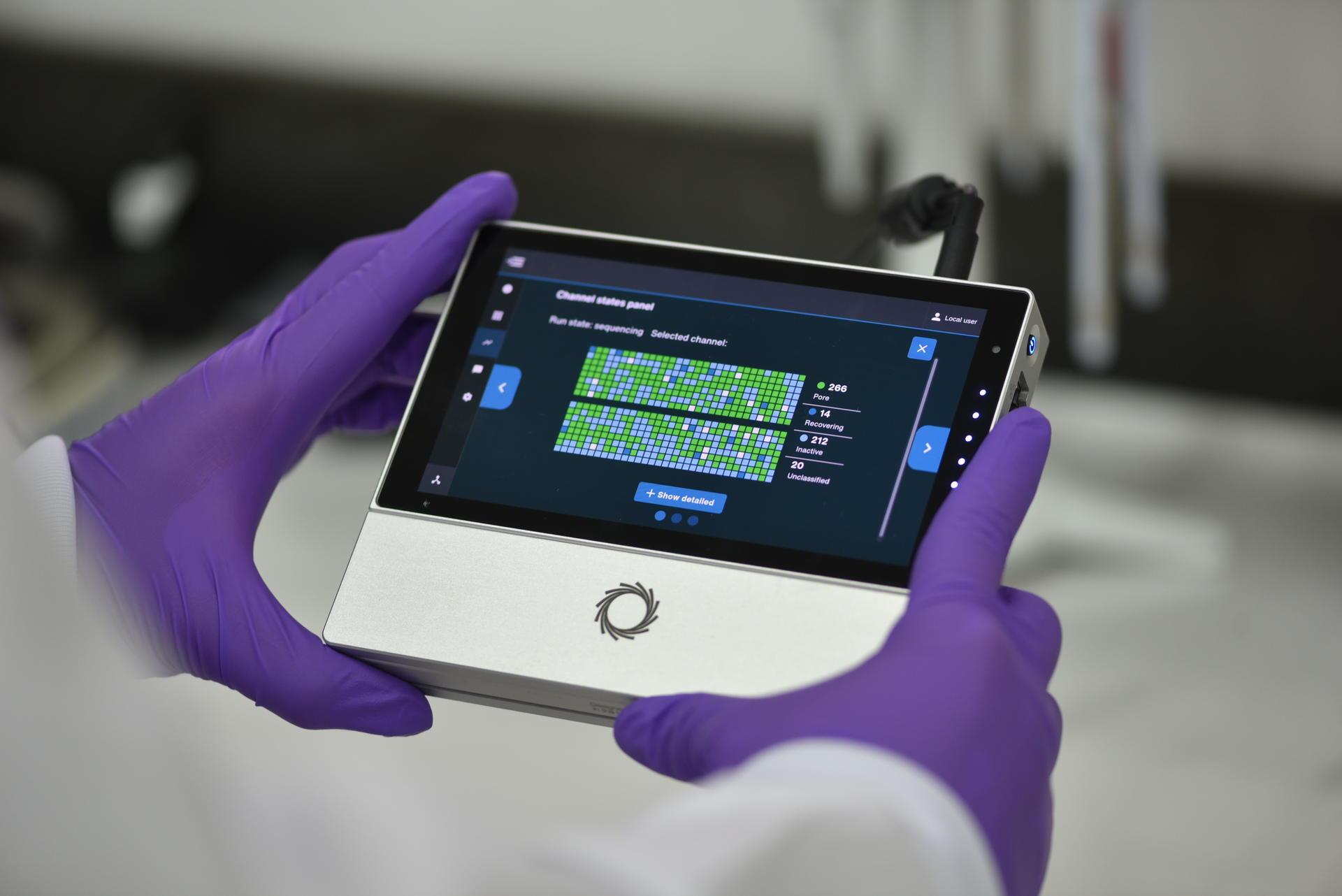
In 2020, the Alliance's virology laboratory collaborated with Colombia's National Institute of Health, cooperating with government institutions in the analysis of more than 1,000 samples, leading to the identification of several COVID-19 variants.
The application of Oxford Nanopore technology is not limited to the Alliance's virology team; other research groups, such as the gene-editing laboratory, have also adopted this methodology.
In these ways, the tool is put at the service of science and agriculture, providing accurate information that not only helps diagnose plant diseases, but also contributes to the achievement of food security.
Nanotechnology, in essence, is the bridge between what we see and what we can barely imagine. This revolutionary innovation opens a window into the microscopic world of plant life and pathogens, redefining the way we understand and combat diseases that affect crops.
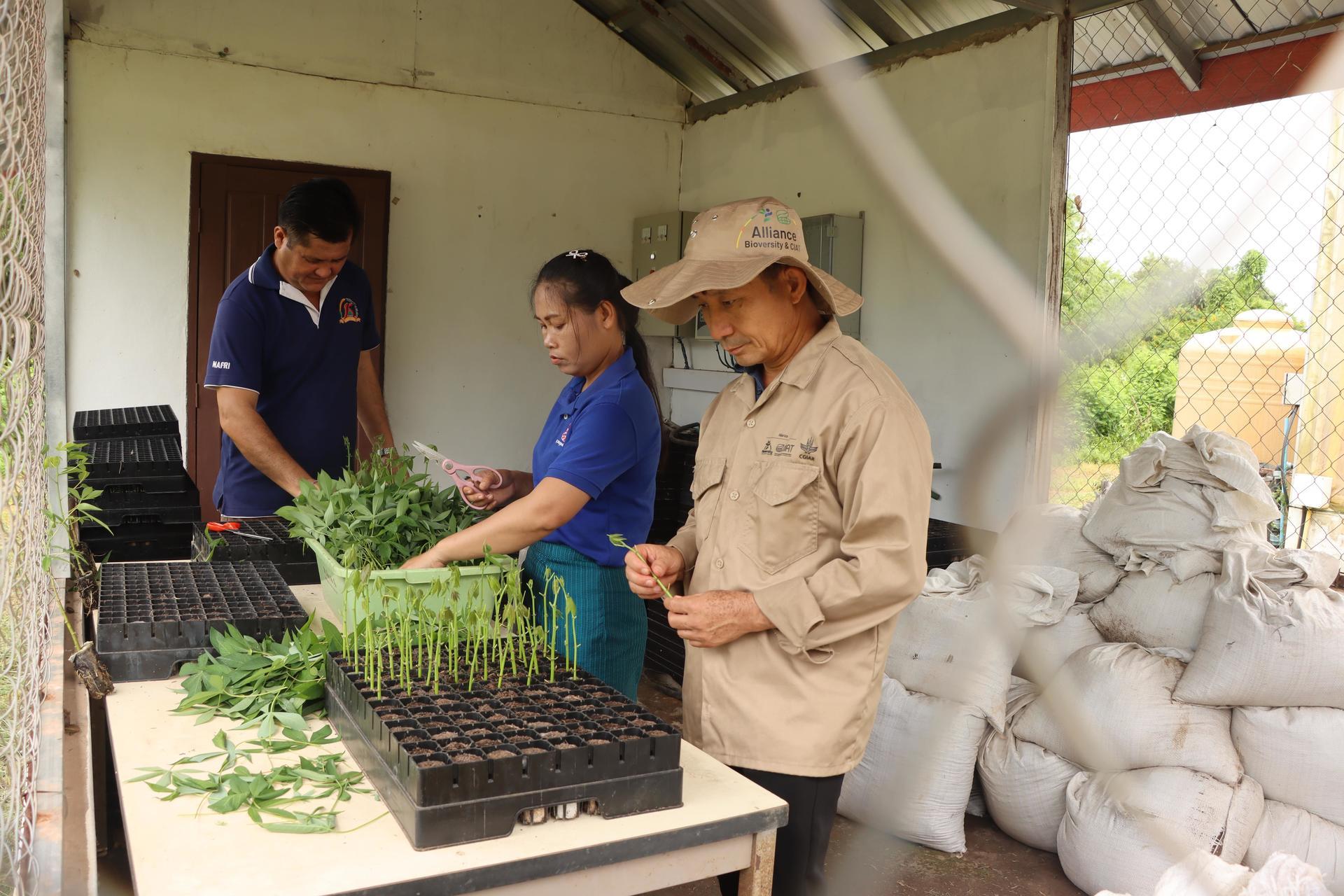
Back in Vientiane, nanopore technology is enabling agricultural extension officers to better track Cassava Witches' Broom Disease. Photo: Alie Galeon
Meet the Team
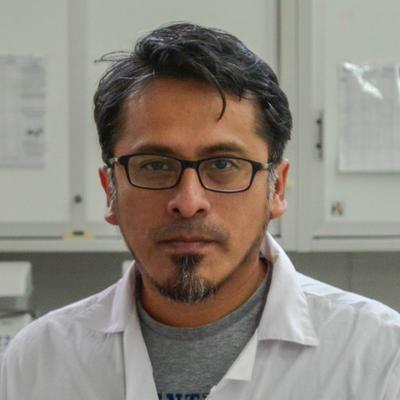
Wilmer Cuellar
Senior Scientist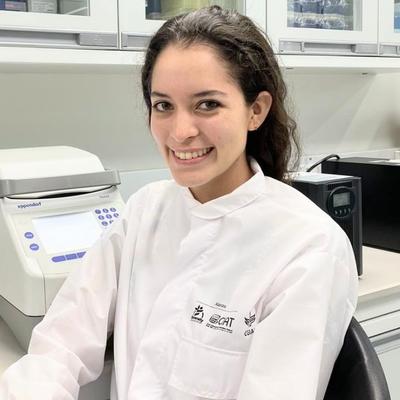
Alejandra Gil-Ordóñez
Research Associate
